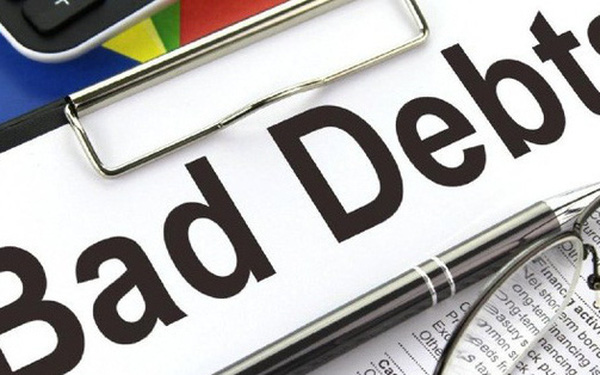 Economy
Economy


|
| Bad debts of 20 local banks at the end of 2020 were VNĐ83.4 trillion (US$3.58 billion). Photo cafef.vn |
HÀ NỘI — The non-performing loans (NPLs) of 20 local banks at the end of 2020 rose by 4.5 per cent year-on-year to VNĐ83.4 trillion (US$3.58 billion), according to the banks’ latest financial statements.
Fifteen of the banks reported a decrease in bad debt ratio last year, with some successfully controlling the ratio at below 1 per cent.
As of December 31, 2020, the bad debt ratio of Vietnam Technological and Commercial Joint Stock Bank (Techcombank) was 0.5 per cent, lower than the 1.3 per cent recorded as of December 31, 2019. The bank currently has the lowest bad debt ratio in the sector.
For Commercial Joint Stock Bank for Foreign Trade of Vietnam (Vietcombank), the bad debts at the end of 2020 were VNĐ5.22 trillion, down by more than 50 per cent. The bad debt ratio of the bank sharply dropped from 1.01 per cent at the end of the third quarter of 2020 to 0.62 per cent at the end of 2020, also the lowest level in the bank’s history.
At Asia Commercial Joint Stock Bank (ACB), the ratio of bad debts on outstanding credit inched up from 0.54 per cent to 0.6 per cent. However, the rate was among the lowest levels in the system.
Similarly, the bad debt ratio of Bac A Commercial Joint Stock Bank (BacABank) slightly increased but was still controlled below 1 per cent. The bank’s ratio of bad debts on outstanding credit rose from 0.69 per cent as of late 2019 to 0.79 per cent.
The fifth bank with bad debt ratio of less than 1 per cent was Commercial Joint Stock Bank for Industry and Trade of Vietnam (VietinBank). According to the bank’s financial statement, the ratio of bad debts as of December 31, 2020 was 0.94 per cent, down compared to the 1.16 per cent at the end of 2019. This was also the lowest bad debt ratio in the 2016-20 period of VietinBank.
Nam A Commercial Joint Stock Bank (NamABank)’s bad debt ratio was also below 1 per cent. The bank’s total bad debts decreased by nearly half from the previous year to VNĐ744 billion, helping the bad debt ratio to fall from 1.97 per cent to 0.83 per cent.
The year saw KienLongBank as the bank with the highest growth in bad debt ratio. The bank’s NPLs jumped 5.5 times to VNĐ1.88 trillion.
However, the NPLs of the banks would be higher if including debts that were restructured to aid COVID-19 affected borrowers according to the Government’s incentive policy.
The State Bank of Việt Nam reported commercial banks restructured loans worth about VNĐ350 trillion for COVID-19 affected borrowers by the end of 2020.
Banking expert Cấn Văn Lực said if half of the loans became bad loans, the bad debt ratio would increase to more than 3 per cent by the end of 2021.
To control the risk of bad loans, banking expert Nguyễn Trí Hiếu recommended as well as recovering bad loans, banks must set aside provisions for bad loans and risky loans.
Some banks have already increased provisions. VietinBank, for example, increased its provisions from 120 per cent to 130 per cent. — VNS